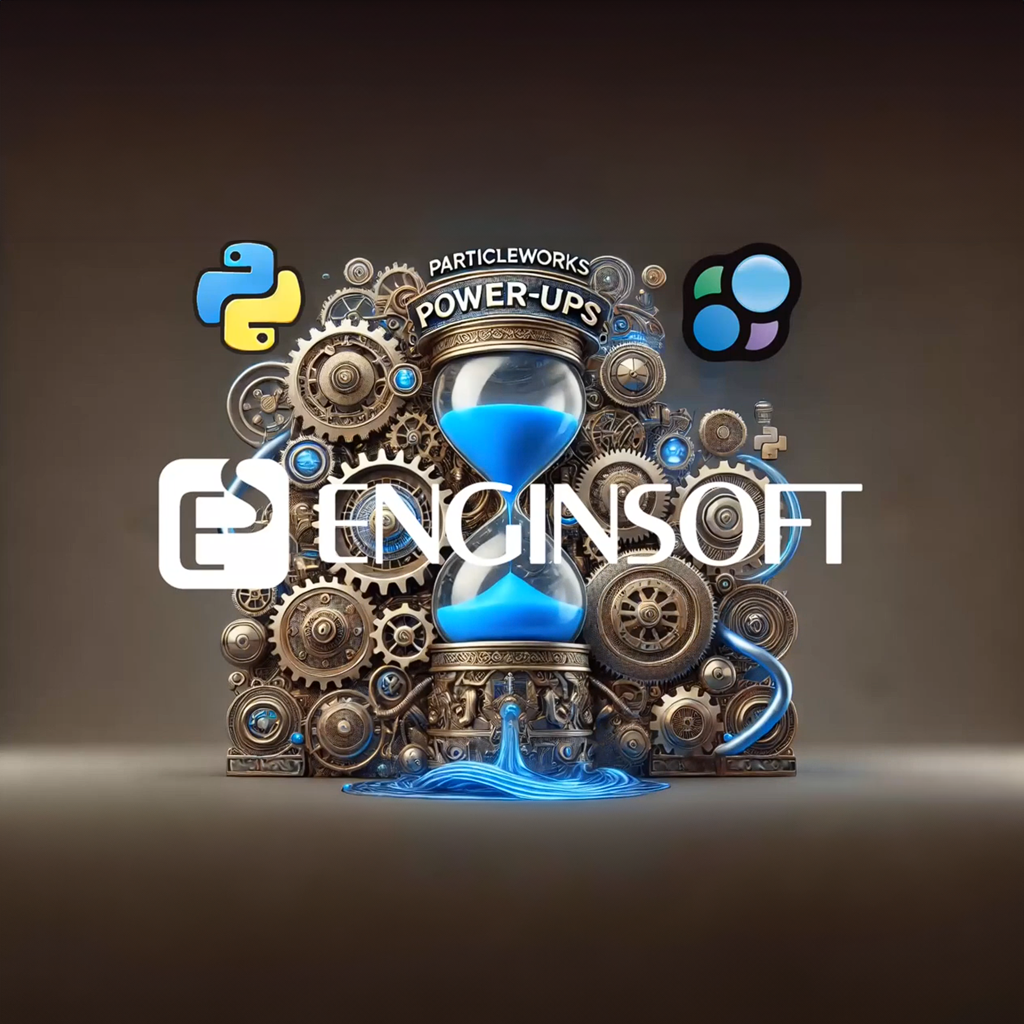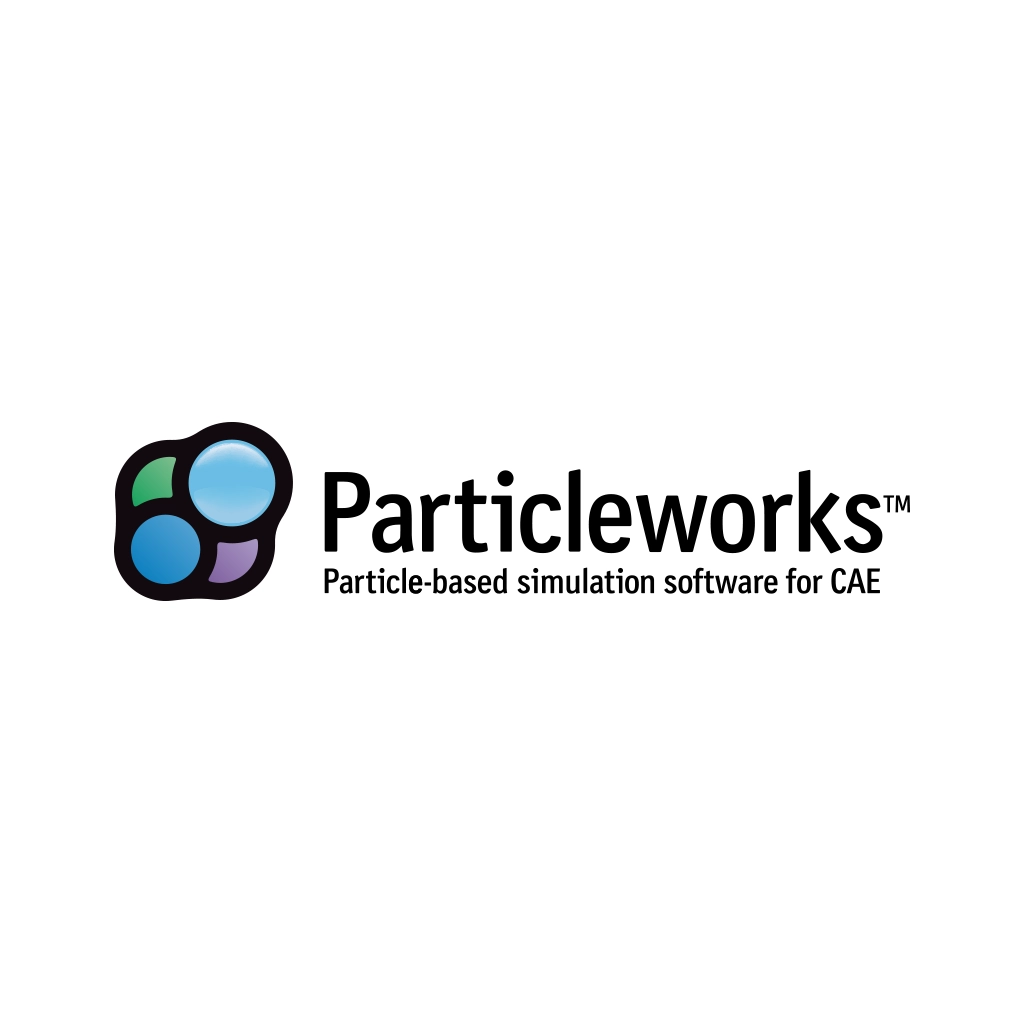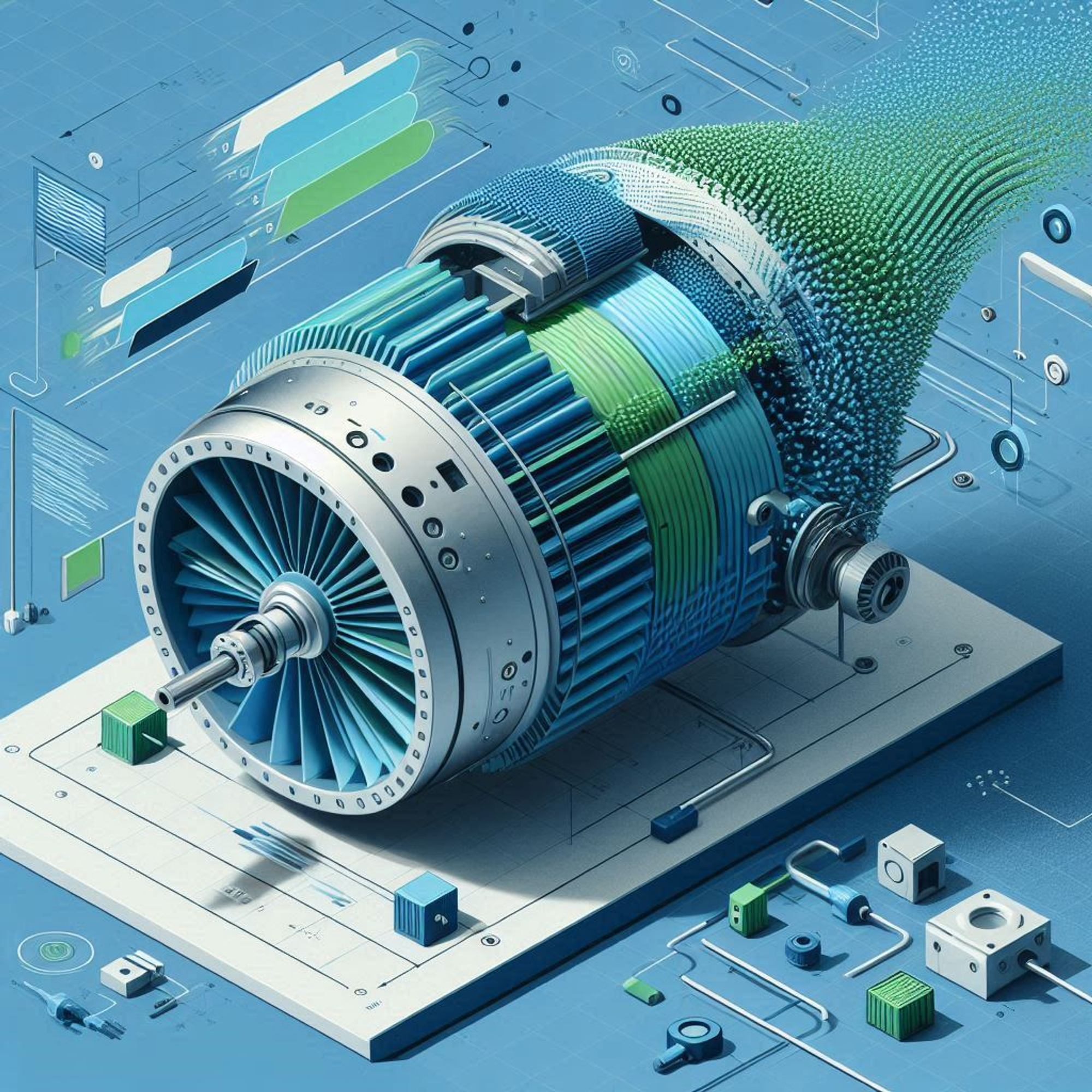Simulation of a Pelton turbine using the moving particle simulation method: application to two challenging situations
The paper by Jean Decaix, Mathieu Mettille, and Cecile Münch-Alligné explores the simulation of Pelton turbines using the Moving Particle Simulation (MPS) method, implemented in the Particleworks software. Pelton turbines, crucial for low discharge and high head configurations in hydro-power plants, face simulation challenges due to complex air/water interactions and the rotational dynamics of the runner. The study contrasts traditional mesh-based computational fluid dynamics (CFD) methods with meshless methods, highlighting the latter's benefits in handling these complex flows.
Test Cases
Two challenging scenarios are examined:
- The ‘falaise’ effect: This occurs due to a sharp drop in efficiency when the jet velocity decreases, affecting the conversion of hydraulic power to mechanical power. It is characterized by an increase in turbine vibrations, especially in multi-jet Pelton turbines.
- Splitter erosion: This involves the degradation of the splitter, impacting the turbine's efficiency over time.
Modelling
The MPS method used in the Particleworks software leverages a semi-implicit approach to solve the Navier-Stokes equations. Unlike the Smoothed Particle Hydrodynamics (SPH) method, MPS does not require a differentiable kernel function, which allows direct computation of gradients of physical quantities. The momentum equation is solved using the SIMPLE-MAC method for incompressible flow, followed by explicit calculations of intermediate velocity and position, and implicit pressure computations to update particle velocities and positions.

Numerical Setup
The computational domain encompasses the full runner with six jets, modeled within a box large enough to capture all significant interactions. Key parameters include:
- Particle size: 2.5 mm
- Total particles: ~12 million per run
- Time step: 5 × 10−6 s
- GPU: NVIDIA Quadro RTX 5000
Results
The ‘falaise’ effect:
- Simulations were conducted for head levels at 100%, 84%, 75%, 66%, 60%, 55%, and 50% of the nominal head.
- Efficiency drop was observed accurately for most head levels, with simulations closely matching experimental data at lower head levels.
- Efficiency at 100% and 84% of nominal head was underestimated by 8% and 12%, respectively.
Splitter erosion:
- Four different ratios of splitter width (b) to bucket width (B) were simulated, showing a high degree of agreement with theoretical predictions (difference < 0.2%).
Comparison with FVM Solver
The study compares the MPS method with the traditional Finite Volume Method (FVM) using Ansys® CFX®:
| Method | Simulation Details | Time Taken | Accuracy and Efficiency |
| FVM Method | Simulating less than one runner revolution | 10 days on a CPU with 24 cores | Lower accuracy in predicting efficiency drops and complex phenomena |
| MPS Method | Simulating two runner revolutions | 24 hours on a NVIDIA Quadro RTX 5000 GPU | Higher accuracy in predicting efficiency drops and complex phenomena, significantly more computationally efficient |
Quantitative Takeaways
- Efficiency Drop Prediction: The MPS method captured the efficiency drop due to the ‘falaise’ effect with a higher accuracy than FVM, showing only an 8-12% deviation from experimental data at higher head levels and near-perfect accuracy at lower head levels.
- Computational Efficiency: The MPS method completed simulations 10 times faster than the FVM method, reducing computation time from 10 days to 24 hours while handling a full runner model instead of a reduced domain.
- Erosion Impact Accuracy: The MPS method showed a deviation of less than 0.2% from theoretical predictions for efficiency loss due to splitter erosion, significantly outperforming the FVM method, which showed a shift of approximately 0.7%.
For further detailed information, the full paper is accessible at: doi.org/10.1080/00221686.2024.2371300.
Particleworks blog
Enjoy our latest blog articles!
We will go over some of the simulation practices from the mesh-less solver and from the intuitive interface, that make the simulation process simple and fast.
Glossary
Take a look at the glossary dedicated to the terms of Moving Particle Simulation.







